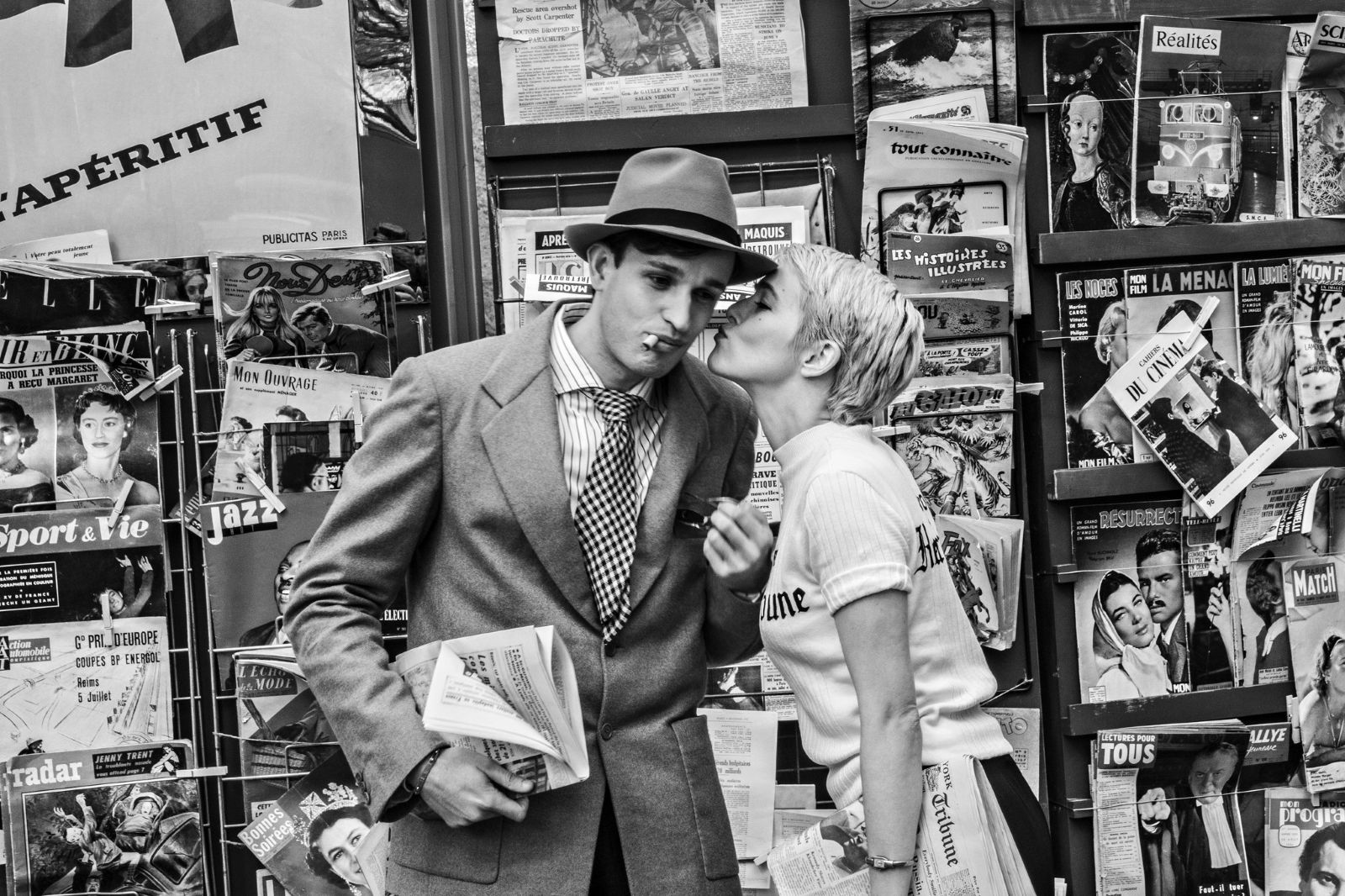Few filmmakers revere the very form in which they work as Richard Linklater. The Texan has been restlessly eclectic in his approach to the medium, from the fly-on-the-wall ensemble of Slacker to the years-long production of Boyhood. One of his great influences is the French New Wave and he adopts the style and techniques of the movement for this loving tribute.
Focusing on perhaps the most celebrated filmmaker from the period, Jean-Luc Godard, and the production of Breathless, Nouvelle Vague is a little too narratively neat and overly respectful to the mythology of the period. Yet, it’s also a delirous cavalvade of the faces and places of the era and feels, amazingly so given the American behind the camera, as authentic as a Galoises extinguished in a glass of Ricard Pastis.
It’s 1959, and Godard (Guillaume Marbeck), the most terrible of all Les Enfants terribles at ‘Cahiers du cinéma‘ magazine, is uncharacteristically perturbed that he’s the last of his colleagues to make his first movie. Marshalling a motley crew of collaborators, including Jean-Paul Belmondo (Aubry Dullin) and Jean Seberg (Zoey Deutch), he sets about revolutionising cinema in his own chaotic fashion with his first film.
Curiously, Linklater has dialled down his own technical experimentation. Unlike his subject, it’s rather soberly presented, beyond the beautiful, period accurate 4:3 aspect ratio and the lovely crackly grain of the film stock (complete with ‘cigarette burns‘). Dialogue tends towards shot-reverse shot, and there’s none of the choppy editing Godard was so found of. Linklater is far more interested in Godard’s methods. Guillaume Marbeck embodies the mercurial director, puckish and slightly arrogant, speaking in gnomic quotations and cutting shooting days short if he feels inspiration is slightly lacking.
He’s a constant source of frustration to both producer Georges de Beauregard (Bruno Dreyfürst), who is footing the bill, and leading actress Jean Seberg. Deutch plays the actress as arriving with a very fixed idea as to what should happen on a film set. She’s something of the audience surrogate. An outsider in two ways, not part of Godard’s inner circle and an American, her frictive relationship with the director provides the central antagonism of the film. Her screen lover Belmondo is far more au fait with Godard’s methods. Aubry Dullin is not just an uncanny ringer for the distinctive actor, but gives an entertainingly louche counterpoint to the spiky Seberg. Also great fun are Matthieu Penchinat as the perpetually bemused cinematographer Raoul Coutard, and Benjamin Clery as Godard’s long-suffering assistant director Pierre Rissient.
Nouvelle Vague may focus on the making of one particular film, but it’s about the movement. Practically every one of the big (Truffaut, Chabrol, Rohmer, Varda) – and many of the peripheral – players make at least a brief appearance, which will delight every cineaste in the way the mid-credits scenes in Marvel movies trigger the ‘DiCaprio-pointing-at-the-screen’ meme in superhero fans. While there’s more than a little self-indulgence there (and a possible commensurate narrowing of the film’s appeal), it’s an utterly immsersive experience, and a rapturous celebration of the creative process. It also sits nicely along classics dealing with similar themes, like 8 1/2, Opening Night, and, another landmark of the Nouvelle Vague, Truffaut’s Day for Night.
Given the astute capturing of time and place, Nouvelle Vague is Linklater working in the same wheelhouse as Dazed and Confused and Everbody Wants Some! At it’s core it’s a period-specific hangout movie, one that just happens to centre one of the most influential films of all time. Even if it’s a comparatively conventional piece, it’s so evocative and pitch-perfect in its execution that it easily overcomes any shortcomings. Pure cinephile joy.
Screened as part of French Film Festival


Comments